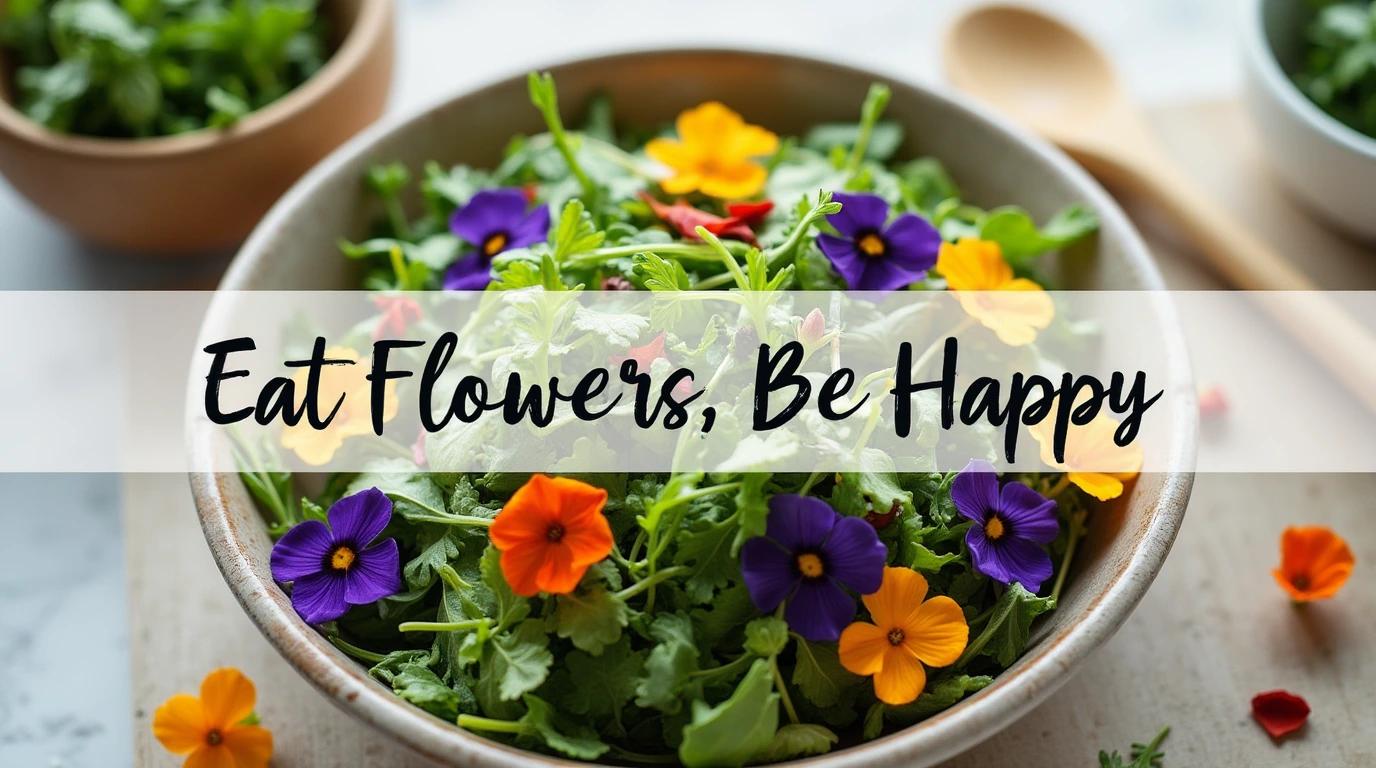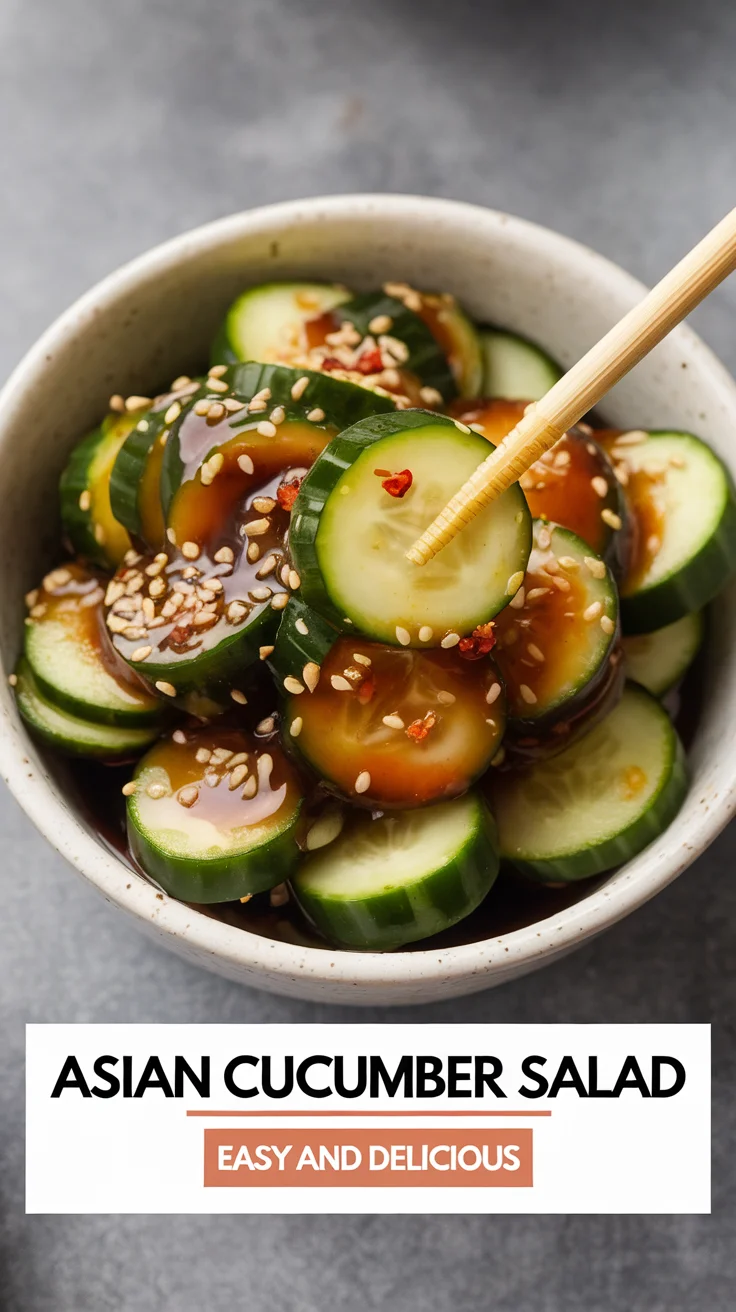In recent years, edible flowers have seen a surge in popularity, transforming salads and other dishes into vibrant works of art. These delicate and colorful blooms not only enhance the visual appeal of your meal, but they also bring a burst of flavor, nutrition, and creativity. One such dish that showcases the beauty and versatility of edible flowers is the “Edible Flower Salad,” a perfect balance of freshness, flavor, and elegance. Whether you’re hosting a springtime dinner party, preparing a light lunch, or simply experimenting with new ingredients, this flower salad is sure to impress your guests. In this article, we’ll explore the benefits, ingredients, plating ideas, and step-by-step instructions for crafting your very own edible flower salad.
The Beauty and Benefits of Edible Flowers
Before diving into the recipe, it’s important to understand why edible flowers are such a great addition to your culinary repertoire. Edible flowers have long been used in various cuisines around the world. They offer a unique combination of beauty, fragrance, and flavor that adds depth and freshness to a wide range of dishes. Many flowers are not only visually appealing but also offer health benefits, making them perfect for those seeking plats healthy (healthy dishes) that are as nutritious as they are delightful.
Flowers are rich in antioxidants, vitamins, and minerals. For example, dandelions are packed with vitamin A, vitamin C, and fiber, while pansies contain antioxidants that help protect the body from free radicals. Nasturtiums, another popular edible flower, have a peppery flavor, similar to arugula, and are rich in vitamin C and iron. Including edible flowers in your meals can be an easy and delicious way to boost the nutritional value of your dishes while simultaneously adding a burst of color and creativity.
Choosing the Right Flowers for Your Salad
When it comes to creating a flower salad, it’s essential to select the right flowers. While many flowers are edible, not all of them are suitable for culinary use. Ensure that the flowers you choose are safe for consumption and have not been treated with pesticides or chemicals. Below are some common edible flowers that can be included in your flower salad:
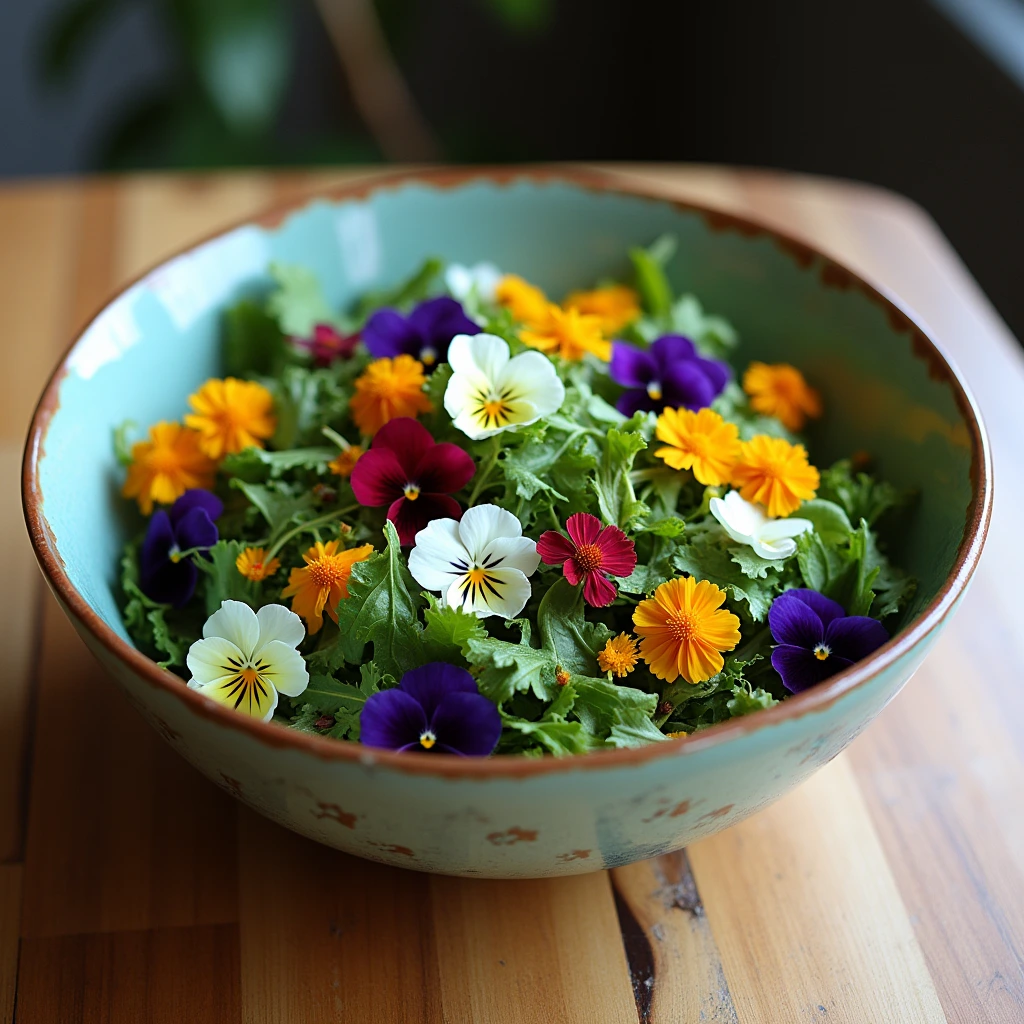
- Dandelions: A common weed that is often overlooked, dandelions are highly nutritious and have a mild, slightly bitter taste. Dandelion petals are great for adding color and texture to your salad.
- Nasturtiums: These flowers are known for their vibrant colors and peppery flavor. Their leaves are also edible and can add a spicy kick to your salad.
- Pansies: With their bright and cheerful appearance, pansies are not only beautiful but also mild in flavor, making them a great addition to any salad.
- Violas: Similar to pansies, violas are mild in flavor and come in a variety of colors. They add a delicate touch to your salad presentation.
- Marigolds: Marigold petals have a citrusy flavor and are perfect for brightening up your salad. They also offer a slightly tangy note that complements other fresh ingredients.
- Chamomile: Known for its calming properties, chamomile flowers have a mild, apple-like flavor and can bring a soft, floral note to your salad.
- Borage: The star-shaped blue flowers of the borage plant are not only visually striking but also taste like cucumber, making them a refreshing addition to your flower salad.
- Lavender: With its fragrant aroma and sweet flavor, lavender can be used sparingly to add a floral note to your salad. Its unique taste pairs well with fruits like strawberries and citrus.
When selecting flowers, consider the flavor profile you want to achieve in your salad. Some flowers, like nasturtiums, will add a spicy kick, while others, like pansies and violas, will provide a more subtle and sweet taste.
Ingredients for the Flower Salad
Now that we know which flowers to use, let’s gather the ingredients for the perfect edible flower salad. This recipe is highly customizable, allowing you to experiment with different flowers and greens based on what’s in season or what you have available.
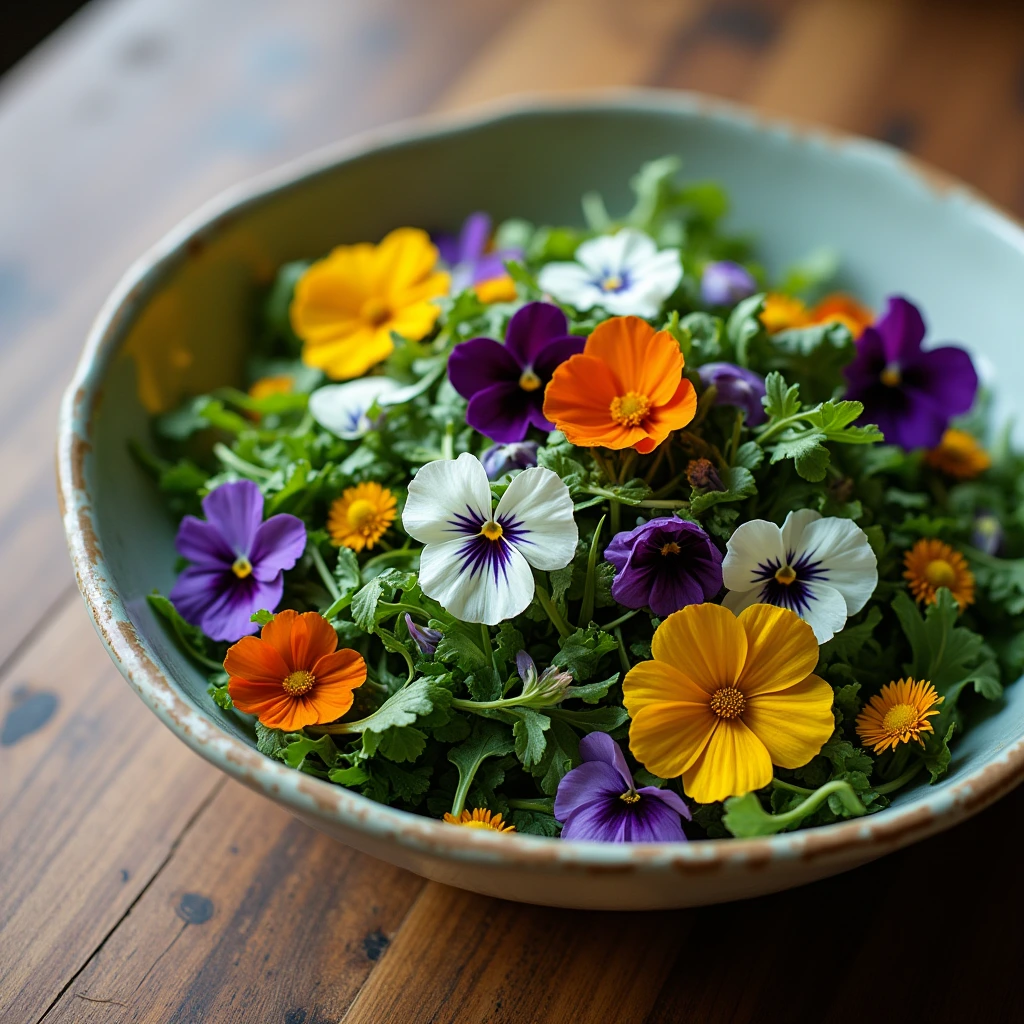
Salad Ingredients:
- Mixed greens: Arugula, spinach, and baby kale make a great base for your salad. You can also use a blend of lettuce leaves, such as butterhead or romaine.
- Edible flowers: A selection of the flowers mentioned above. Make sure to use flowers that have been sourced from a reputable source (i.e., pesticide-free).
- Fresh fruits: Strawberries, raspberries, blueberries, or citrus slices can add sweetness and a burst of flavor to your salad.
- Herbs: Fresh herbs such as mint, basil, or parsley can enhance the flavor of your salad and provide a refreshing contrast to the flowers.
- Nuts and seeds: A handful of toasted walnuts, almonds, or sunflower seeds can provide a satisfying crunch.
- Cheese: Soft cheeses like goat cheese or feta can add creaminess and tang to the salad.
- Dressing: A light vinaigrette made with olive oil, lemon juice, honey, and Dijon mustard works beautifully with the delicate flavors of the flowers and greens.
Optional Add-ins:
- Grilled chicken or tofu: For those looking to add some protein to their salad, grilled chicken or tofu can make a great addition.
- Avocado: Slices of avocado can add richness and creaminess to the salad.
- Grilled vegetables: Roasted or grilled vegetables such as zucchini, bell peppers, and beets can add depth and flavor to your dish.
Plating Ideas for a Stunning Flower Salad Presentation
Plating ideas play a crucial role in elevating your flower salad into a true culinary experience. A well-plated dish not only enhances the visual appeal but also sets the mood and tone for the meal. Here are a few plating ideas to help you create a memorable presentation:
- Layered Effect: Create a layered effect by arranging your mixed greens at the base of the plate. Add sliced fruits and vegetables in an artful arrangement, and then gently scatter the edible flowers over the top. This will give your salad depth and dimension.
- Circular Arrangement: For a more structured and organized look, arrange the flowers in a circular pattern on the plate. Start by placing the larger flowers in the center and working your way outward with smaller flowers and greenery. This creates a focal point and adds symmetry to your presentation.
- Rustic Style: For a more natural and rustic presentation, simply toss the salad ingredients together and serve it in a shallow bowl. Scatter the flowers on top without worrying about perfection, creating a casual and organic feel.
- Glass Jar or Mason Jar: Serve your flower salad in a glass jar or mason jar for a fun and trendy presentation. Layer the ingredients in the jar, ensuring that the edible flowers are visible from the outside.
- Flower Garnishes: For an extra touch of creativity, use whole flowers as garnishes for your salad. Consider placing a single large flower in the center of each plate for a striking focal point.
- Edible Flower Ice Cubes: For an even more whimsical presentation, freeze edible flowers in ice cubes and place them in the salad bowl. This adds a refreshing touch and elevates the overall aesthetic.
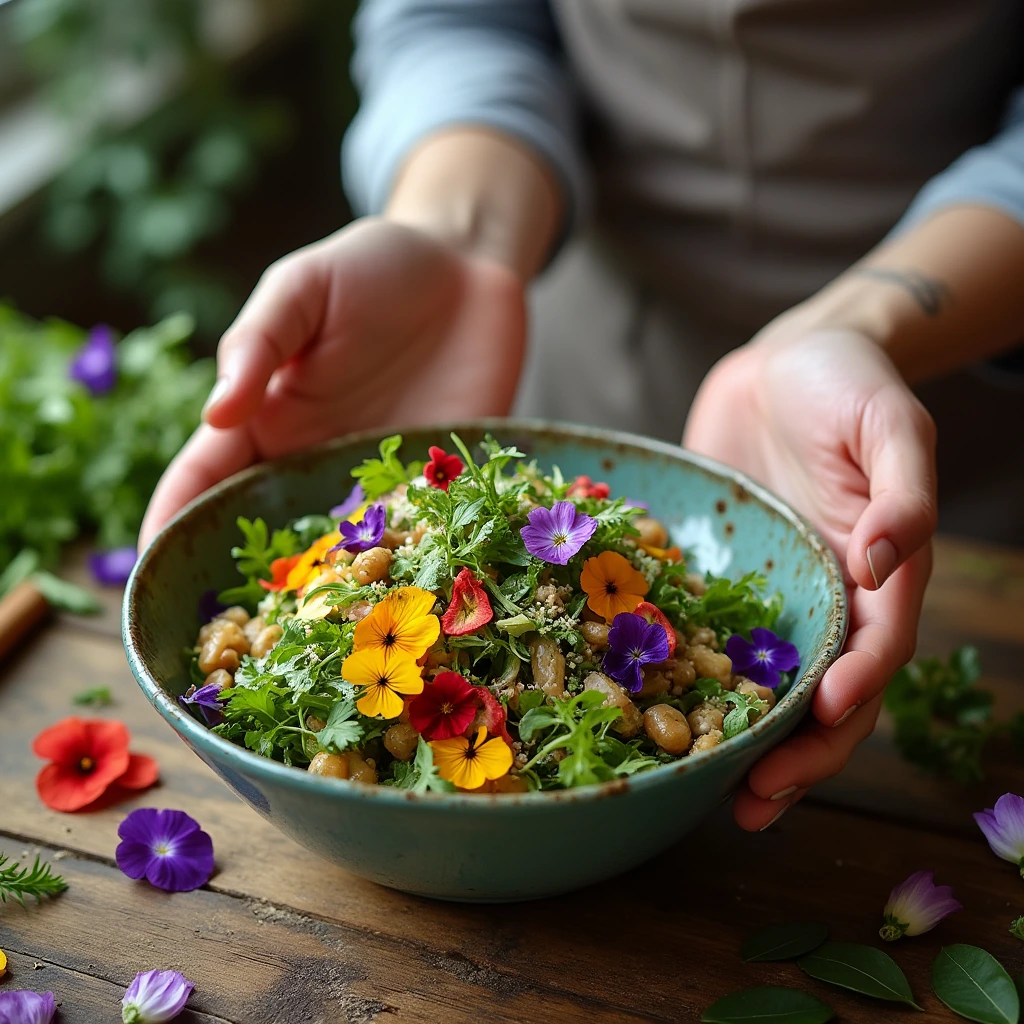
Dandelion Recipes and Variations
While dandelions are a beloved flower for salads, they can be used in other dishes as well. Dandelion greens are often used in soups, stir-fries, or even made into dandelion pesto. Dandelion petals, when used in flower food, can be added to smoothies, jams, and baked goods. They are also excellent when incorporated into delicate herbal teas.
For a variation on the flower salad, you could try a Dandelion and Goat Cheese Salad. Combine dandelion leaves with creamy goat cheese, toasted nuts, and a honey-balsamic dressing. This version offers a slightly more savory flavor, perfect for a spring brunch.
Flower Salad for Special Occasions
Whether you’re planning a garden party, an outdoor wedding, or a special brunch with friends, this edible flower salad is the perfect dish to serve. Its vibrant colors, fresh ingredients, and delicate flavors will surely impress your guests and elevate the meal.
For a themed gathering, you can customize the salad based on the flowers of the season or the type of event. For example, for a summer garden party, use sunflowers, lavender, and chamomile for a soft, fragrant touch. For a wedding or romantic dinner, use roses, pansies, and violets for their sweet fragrance and delicate petals. You can also color-coordinate the flowers to match the event’s theme or the seasonal produce available.
Conclusion
The “Eat Flowers, Be Happy” edible flower salad is a perfect example of how flowers can elevate everyday meals into extraordinary dining experiences. This vibrant dish offers a delightful combination of flavors, textures, and visual appeal. With the right combination of flowers, fruits, herbs, and greens, you can create a flower salad that is not only delicious but also a feast for the eyes. From flower salad plating ideas to choosing the best edible flowers, this recipe brings together the beauty of nature and the creativity of the kitchen. So go ahead, experiment with flowers recipes, and enjoy the delicate beauty and nutrition of flowers food in every bite.
